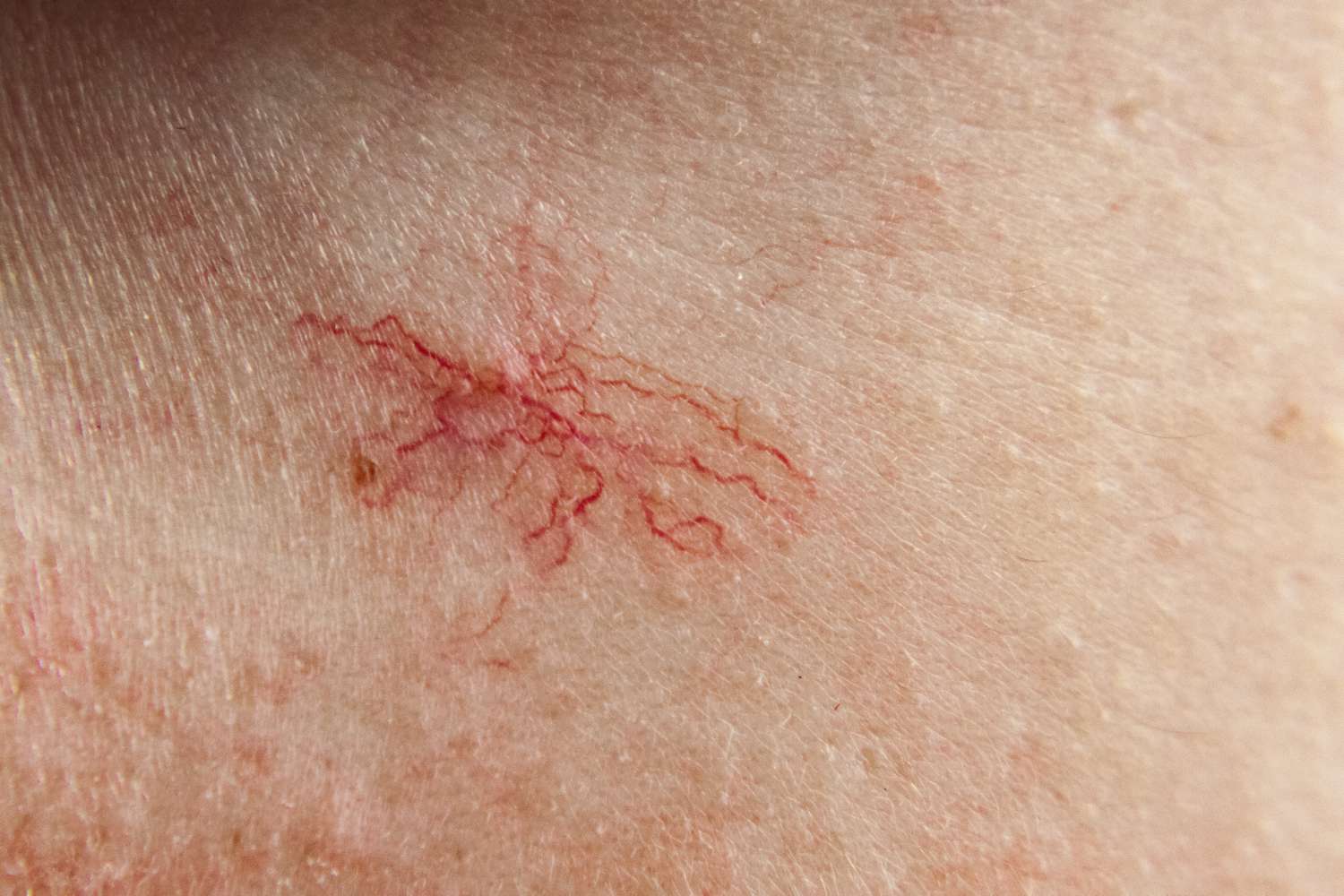What are the symptoms of a spider angioma?
Spider angiomas, also known as spider naevi, are small, benign vascular lesions characterized by their distinctive appearance. The symptoms typically include:
- Red or Purple Spots: They usually appear as red or purple spots on the skin, often on the face, neck, chest, or arms.
- Radiating Vessels: The spots have a central red dot with radiating, fine blood vessels extending outward, resembling a spider’s web or a starburst.
- Pulsation: Sometimes, these lesions may exhibit a slight pulsation or blanching when pressed.
- No Pain: Generally, spider angiomas are not painful or itchy and are usually asymptomatic.
They are often seen in conditions like liver disease or hormonal changes but can also appear in otherwise healthy individuals.
What are the causes of a spider angioma?
Spider angiomas are caused by the dilation of small blood vessels near the surface of the skin. The underlying causes can vary and include:
- Liver Disease: Conditions such as cirrhosis or chronic liver disease can lead to an increased number of spider angiomas due to liver dysfunction affecting blood flow and hormone levels.
- Hormonal Changes: Changes in hormone levels, particularly during pregnancy or with the use of oral contraceptives, can contribute to their development.
- Genetic Factors: Some individuals may have a genetic predisposition to developing spider angiomas.
- Estrogen Levels: Elevated estrogen levels, whether due to medication or hormonal imbalances, are often associated with spider angiomas.
- Systemic Diseases: Rarely, they can be a sign of systemic conditions like autoimmune diseases or certain malignancies, though this is less common.
While spider angiomas themselves are usually benign and not indicative of a serious condition, they can sometimes signal underlying health issues that may need to be addressed.
What is the treatment for spider angiomas?
Treatment for spider angiomas typically depends on their underlying cause and the extent to which they are bothersome or problematic. Here are common approaches:
- Address Underlying Conditions: If spider angiomas are associated with liver disease or hormonal imbalances, treating the underlying condition may reduce or resolve them.
- Laser Therapy: For cosmetic concerns, laser treatments can effectively reduce or eliminate spider angiomas. Lasers target the blood vessels, causing them to collapse and fade from view.
- Electrosurgery: This method uses high-frequency electrical currents to destroy the blood vessels responsible for the spider angiomas.
- Sclerotherapy: This involves injecting a sclerosing agent into the spider angioma, causing the blood vessels to collapse and be absorbed by the body.
- Topical Treatments: Sometimes, topical treatments may be used, though they are generally less effective compared to laser therapy or other procedures.
Consultation with a dermatologist or healthcare provider is advisable to determine the most appropriate treatment based on individual circumstances.
What is a sclerosing agent?
A sclerosing agent is a substance used in medical treatments to cause a controlled inflammatory response in tissues, leading to the closure or scarring of blood vessels or other structures. The agent is injected into or applied to the affected area, where it irritates the lining of blood vessels or other tissues, causing them to collapse and eventually be absorbed by the body.
In the context of treating spider angiomas or varicose veins, sclerosing agents are injected directly into the abnormal blood vessels. This causes the vessels to shrink and disappear over time. Common sclerosing agents include:
- Sodium Tetradecyl Sulfate (STS): A detergent-like substance that irritates and damages the lining of blood vessels.
- Polidocanol: A detergent used in a similar manner to STS, causing the blood vessels to collapse.
- Hypertonic Saline: A concentrated salt solution that can also cause the vessels to collapse.
The choice of sclerosing agent depends on the specific condition being treated and the healthcare provider’s preference.

Leave a Reply
You must be logged in to post a comment.